Lea Wait's Blog, page 91
April 21, 2022
Sharing an April Post with My Mother
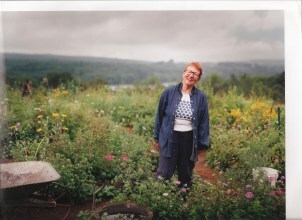
A. Carman Clark in her garden
Kate Flora: It’s April, the month of my late mother’s birthday. It was the 17th, and of course I walked around the yard, peering at the newly emerging plants and shrubs, and thought of her. Often, on April 17th, we would have a picnic down by the lake. It didn’t matter if it was freezing, or if the ice had gone out, she wanted a picnic for her birthday, and a picnic we would have.
Thinking about mom–a garden writer, a newspaper columnist, a food writer, a passionate gardener, and the kind of grandma who would prowl the dusty, spider-infested basement with her grandchild, observing insects–led me to pull her collection of season essays, From the Orange Mailbox, off the shelf and turn to April.
Here is one of those essays:
“March” sounds harsh and has connotations of weariness and dreary journeys with cold
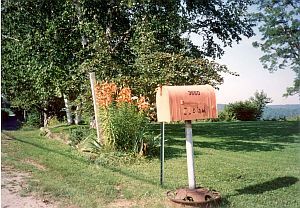
The Orange Mailbox at 1000 E. Sennebec Road.
and tired feet. But “April” has a lilt to it. I find myself alternating between impulses to sail bits of bark as boats down the run-off streams (betting on their safe sailing through the culvert) and the need to stand in silent wonder at the vast tilting and revolving of this ponderous planet which has brought the sunset back to my kitchen window.
In January it was necessary to walk through the house to the guest room to watch the setting sun. On June twenty-first two tall spruce trees on top of the ridge will frame the sun as it sets directly across from the corner windows above my orange sink. The morning sun no longer creeps up over the tall pines but, having moved northward, springs up beyond the orchard as though it couldn’t wait to warm the world.
There’s an excitement about beginnings and April is another beginning the spiral of my country years, an onward, upward continuity of living and participating the cycle of growth and harvest. The annual miracle of spring with the stirrings of the soil and the quickening of the plants is proof that life persists despite earthquakes, volcanic eruptions, and human follies. This miracle is also a powerful, pulsing reminder that I do not control the life on my acres.
Living in the country tends to focus my thinking toward a fairly small world but one I know well and see as a whole. I’ve learned what influences good production on my farm and have adjusted to what can be changed and what must be accepted. Garden records show an average of 112 frost-free nights. No necessarily warm, growth-promoting nights–just those without white frost. If the seed catalog says 110 days to maturity, I know about what my chances of success will be.
The day the ice goes out of the pond I start my tomato seedlings. If tomato seedlings stay in the house too long they tend to get spindly. If they’re set out before the soil is warm, they just sit and sulk. Ic-out time makes a reasonable, easy-to-remember time to start the seeds and gives me the feeling of working with nature.
Until I moved to this house on the hill overlooking the pond, I had never seen any body of water free itself from its strait jacket of ice. The first year, I described the pond in December as “. . . all pure and white. It stretches north for two miles giving the valley a tranquil, refreshed look.” In March, I saw the same scene as “so dull and monotonous. The whole valley appears dead and boring and I long for open, splashing, reflecting water.”
We used to place bets on the day the pond would be free of ice and the winner could choose dessert. Ice-out brought chocolate roll with whipped cream, lemon pie, blueberry steamed pudding, Indian pudding and others now forgotten. Then the ice-out picnic and watching for the first sign of the loons–all part of the excitement of April.
The house used to be full of flats and pots and cans of seedlings until the time required to water and turn and re-transplant the hundreds of green growing things brought more frustration than pleasure. I do start eggplant and peppers because there are certain varieties I want to test. But I tend only enough seedlings for my garden plan. There may be some status in having the earliest broccoli in the neighborhood but rather than tending seedlings indoors I’ll use my time to be outside sniffing the world now that April’s here.
The earth, giving up its winter rigidity, exudes many different fragrances: the gentle pungent scent of wet oak leaves, the sharp, sweet odor of the first green grasses, the soft, rich aroma of the dark compost.
The soil is for growing and life is for living. Spring reminds me of the constant chances within the framework of eternal community. Only by cooperating with the soil and understanding the laws of nature can I garden with pleasure. I need to grow my food. I need to continue the gardening experiments for my writing assignments. April, the month of renewal, reminds me that my acres must be managed to provide me with time to celebrate being and feeling alive, time to slow down and savor my joy in living here. Joy is the best harvest.
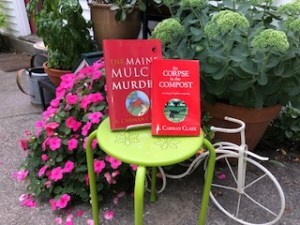
A. Carman Clark’s books on display at Mainely Murder
April 18, 2022
The Hero’s Journey (conclusion)

Vaughn C. Hardacker
Vaughn Hardacker here. In my last couple of blog posts, I discussed the 17 steps of Campbell’s Monomyth and how they can develop into that vital thing that we call plot (also known as a story). In this post, I will reduce the seventeen steps to twelve stages and the components of each stage. I will attempt to compare The Lord of The Rings trilogy.
Stage 1: The Ordinary World. We see the hero’s normal life at the start of the story. Frodo’s life in The Shire. He and his companions are shown as youthful young Hobbits with little, if any, sense of responsibility.
Stage 2: Call to Adventure. The hero is faced with an event, conflict, problem, or challenge that makes them begin their adventure. Bilbo Baggins is visited by the dwarfs in The Hobbit and Gandalf finds the one ring and tells Frodo he must be the one to take it.
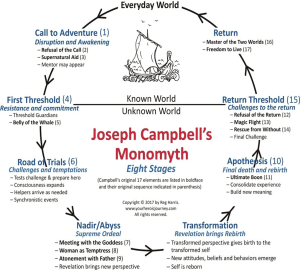 Stage 3: Refusal of the call. The hero refuses the adventure due to fear, hesitation, insecurity, or any reason. We see this when Frodo refuses Gandalf’s quest using fear as his reason. He had never before left The Shire and was afraid of the unknown.
Stage 3: Refusal of the call. The hero refuses the adventure due to fear, hesitation, insecurity, or any reason. We see this when Frodo refuses Gandalf’s quest using fear as his reason. He had never before left The Shire and was afraid of the unknown.
Stage 4: Meeting the Mentor. In the Lord of The Rings, Frodo will meet several mentors Initially there is Gandalf and several of them appear with Aragon becoming the most influential.
Stage 5: Crossing theThreshold. The hero leaves their ordinary world and embarks upon the quest. In The Fellowship of the Ring, Gandalf tells Frodo that he has confirmed that the Ring is the one lost by the Dark Lord Sauron long ago and counsels him to take it away from the Shire. Gandalf leaves, promising to return by Frodo’s birthday and accompany him on his journey, but fails to do so.
Note: These stages appear twice in the trilogy. First, there is a departure from The Shire and again the departure from the home of the elves. Both of which appear in The Fellowship of The Ring.
Stage 6: Tests, Allies, and Enemies. Instances of these throughout the trilogy. The hobbits’ first ally is a ranger, named Strider (later identified as the King Aragorn), who takes the adventurers to Rivendell, where the fellowship is formed. The members of the fellowship encounter Sauron’s minions, the Orcs. I have always thought that the character that fits all of these is Gollum. He is introduced as an enemy, becomes an ally (for devious reasons), and again becomes an enemy.
Note: Although often called a trilogy, the work was intended by Tolkien to be one volume of a two-volume set along with The Silmarillion.[3][T 2] For economic reasons, The Lord of the Rings was published over the course of a year from 29 July 1954 to 20 October 1955, in three volumes titled The Fellowship of the Ring, The Two Towers, and The Return of the King. The work is divided internally into six books, two per volume, with several appendices of background material. Some later editions print the entire work in a single volume, following the author’s original intent. Tolkien’s work, after an initially mixed reception by the literary establishment, has been the subject of extensive analysis of its themes and origins. Influences on his earlier work, and on the story of The Lord of the Rings, include philology, mythology, Christianity, earlier fantasy works, and his own experiences in the First World War.
Stage 7: The Approach. The initial plan to take on the central conflict begins, but setbacks occur that cause the hero to try a new approach or adopt new ideas. One member of the fellowship, Boromir, attempts to steal the ring. Orcs attack and Boromir is killed. The remaining members ward off the Orcs and Frodo realizes that the ring’ s allure is too great and decides to set out alone. He and Samwise Gamgee sneak off.
Stage 8: The Ordeal. Things go wrong and added conflict is introduced. The Hero faces more difficult hurdles and obstacles, some of which may be life-threatening. In the trilogy, there are too many of these to list. I believe that what Campbell is saying is: once the hero is juggling three balls; throw him a fourth…and a fifth.
Stage 9: The Reward. After surviving The Ordeal, the hero seizes the reward they’ve earned that allows them to take on the biggest conflict. It may be a physical item or piece of knowledge or wisdom that will help them persevere. There are a number of rewards in the trilogy, one of which is the sword the heroes have that glows blue when Orcs are near.
Stage 10: The Road Back. The hero sees the light at the end of the tunnel, but they are about to face even more tests and challenges. Gollum leads Frodo and Sam around the Black Gate and they enter Mordor, Sauron’s home and the location of Mount Doom. The only way to destroy the ring is to throw into the fires of the volcano, where it was forged. Sam has suspected that Gollum has been sabotaging them and convinces Frodo. Frodo, however, refuses to kill Gollum and they drive him away.
Stage 11: The Resurrection. The hero faces a final test, using everything they have learned to take on the conflict once and for all. Frodo and Sam enter Mount Doom. However, the ring will not go away easily. Frodo cannot resist the Ring any longer. He claims it for himself and puts it on. Gollum suddenly reappears. He struggles with Frodo and bites off Frodo’s finger with the Ring still on it. Celebrating wildly, Gollum loses his footing and falls into the fire, taking the Ring with him. When the Ring is destroyed, Sauron loses his power forever.
Stage 12: The Resurrection. The hero returns home bringing with them knowledge back to the ordinary world. The four hobbits make their way back to the Shire, only to find that it has been taken over by men directed by “Sharkey” (whom they later discover to be Saruman). The hobbits, led by Merry, raise a rebellion and scour the Shire of Sharkey’s evil. Gríma Wormtongue turns on Saruman and kills him in front of Bag End, Frodo’s home. He is killed in turn by hobbit archers. Merry and Pippin are celebrated as heroes. Sam marries Rosie Cotton and uses his gifts from Galadriel to help heal the Shire. But Frodo is still wounded in body and spirit, having borne the Ring for so long. A few years later, in the company of Bilbo and Gandalf, Frodo sails from the Grey Havens west over the Sea to the Undying Lands to find peace.
Note: At this point, the films depart from the books. In the film, Sam and Frodo are rescued and the final battle against Saruman is not covered.
In conclusion. If followed, Campbell’s model can assist the writer in a number of ways. It provides a map by which the plot can be developed and it also works as an outline that you can utilize when writing your story. BTW. You may not be a fan of Tolkein but if you compare the Monomyth Model to the majority of successful books and films you can see all of the elements and stages have been utilized.
April 17, 2022
The 1950 Census is Out
Kaitlyn Dunnett/Kathy Lynn Emerson here. As regular readers of this blog know, I’m a genealogy buff, so I was eagerly anticipating the April 1 release of the U. S. census taken in 1950. I didn’t expect to learn too much about my family that I didn’t already know, since I was born in 1947 and was actually around when the 1950 census was taken, but I was looking forward to seeing my name in this one.
Well, it’s there, and as expected I found myself and my parents living in the upstairs apartment in my grandparents’ house. But in the fine old tradition of census takers over the decades, this one misspelled my name. Aaargh! Since my mother was one of the every ten individuals singled out to be asked additional questions, you’d really think they could have gotten it right.

Those additional questions concern education, employment, and income. Mom was willing enough to tell them she graduated from high school, and since she had a two-year old kid, she hadn’t worked outside the home in the past year, but it came as no surprise to me that she declined to tell the census taker what the family income for the past year had been. My mother had a firm belief that some things were nobody else’s business.
In older census records I’ve seen, the census takers generally went from house to house in a fairly direct path, sometimes getting information from neighbors if there was no one at home at one address. This one is all over the place, and not just in the entries for my home town, either. I didn’t catch onto that at first. Fortunately, there are house numbers in the margin, so when I realized that Mr. and Mrs. Atkins, my grandparents long-time neighbors, weren’t next to them in the census, and that Mrs. Prettyman, my first (and third) grade teacher, who lived several houses away on the opposite side of Carrier Street, was, I finally figured out what was going on.
Having found one set of grandparents, I went in search of the other. Apparently, the road the farm was on didn’t have a name, so the census taker wrote a description of the location at the top of the page. There were two other curious things about the entry, too. One really obvious one is that there are what look like several empty houses on both sides of the farm. There’s an easy explanation for that. The census was taken before the Season. There were summer rental bungalows on one side. I remember those. I know my great aunt and some distant cousins occupied two houses on the side toward Hurleyville, but I’m pretty sure there was at least one other house before that. Someone’s summer home? Then again, given the way the census taker in my home town skipped around, maybe this one was counting the woods across the road and the old one-room schoolhouse as vacant lots. One other thing gave me a chuckle. Grampa Coburg owned a gas station in the village. His profession is listed as “gas dispenser.”

While I was looking for my family, my husband set off in search of his. He and his newborn brother and their parents were living with his paternal great-grandfather while his father attended U. Maine on the G.I. Bill. The only real surprise there was that Dad didn’t list his occupation as “student” but instead said he was working for his grandfather, a mason contractor. Dad was another one selected for extra questions and more open about answering them. He said he worked 35 weeks the previous year but listed his total income at zero. He said that the household income for the previous year was $400. That seems so little, but prices were also much much lower in 1950.

Access to the census is easy to find in a Google search (you don’t have to join Ancestry.com), and it is searchable even if it is not yet thoroughly indexed. If you know the state and county where someone lived and that person’s name, you can probably find the entry. It may just take a bit of hunting. Fair warning, though—the search can be addictive. Start with one relative and you’ll probably end up trying to find every single person you know who was living in 1950.

Kathy Lynn Emerson/Kaitlyn Dunnett has had sixty-four books traditionally published and has self published others, including several children’s books. She won the Agatha Award and was an Anthony and Macavity finalist for best mystery nonfiction of 2008 for How to Write Killer Historical Mysteries and was an Agatha Award finalist in 2015 in the best mystery short story category. She was the Malice Domestic Guest of Honor in 2014. Her most recent publications are The Valentine Veilleux Mysteries (a collection of three short stories and a novella, written as Kaitlyn) and I Kill People for a Living: A Collection of Essays by a Writer of Cozy Mysteries (written as Kathy). She maintains websites at www.KaitlynDunnett.com and www.KathyLynnEmerson.com. A third, at A Who’s Who of Tudor Women, is the gateway to over 2300 mini-biographies of sixteenth-century Englishwomen.
April 15, 2022
Weekend Update: April 16-17, 2022
 Next week at Maine Crime Writers there will be a posts by Kaitlyn Dunnett/Kathy Lynn Emerson (Monday) Vaughn Hardacker (Tuesday), Kate Flora (Thursday) and Charlene D’Avanzo (Friday).
Next week at Maine Crime Writers there will be a posts by Kaitlyn Dunnett/Kathy Lynn Emerson (Monday) Vaughn Hardacker (Tuesday), Kate Flora (Thursday) and Charlene D’Avanzo (Friday).
In the news department, here’s what’s happening with some of us who blog regularly at Maine Crime Writers:
Get your cameras out because it’s almost time for:
The Maine Crime Writer’s 2022
‘Where Would You Put the Body?” Contest
How do you enter? Send a photograph of your chosen spot to: WritingAboutCrime@gmail.com with “Where Would You Put the Body?” in the subject line and the photo’s location in the body of the email. There will be prizes for First, Second, and Third place–books of course and other Maine goodies. You may enter no more than three photographs, each one entered separately. They must be of Maine places and you must identify the place in your submission. Photos must be the submitter’s original work. Contest will begin May 1st and will run through June 15th.
Check it out—Maine Crime Wave is on for 2022
https://www.mainewriters.org/maine-crime-wave
https://www.mainewriters.org/events/panelists-moderators-2022
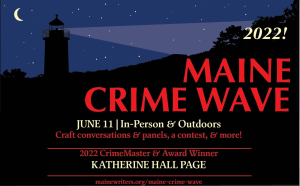
An invitation to readers of this blog: Do you have news relating to Maine, Crime, or Writing? We’d love to hear from you. Just comment below to share.
And a reminder: If your library, school, or organization is looking for a speaker, we are often available to talk about the writing process, research, where we get our ideas, and other mysteries of the business. We also do programs on Zoom. Contact Kate Flora
April 14, 2022
WHY MAINE?
I’ve posted a version of this article before, but I’ve updated it. So here goes. I’ve set eight of my published novels in Maine and the state is also the setting of my work in progress, a blend of romantic suspense and murder mystery to finish my Obsession series. Well, actually, romantic suspense usually involves mystery as well. But this time, my heroine is a Maine Major Crimes Unit detective, so her case is central to the plot. But I digress.
Why Maine, I asked myself. I investigated that idea of the lure of Maine on Amazon.com for books set in Maine or with Maine in the title. My search yielded 36,221 results, both fiction and nonfiction. Next a Google search of Maine authors yielded 2308 results. That lengthy list included authors who lived in the state as well as those who’d set a book in Maine.
This blog is popular because of the wonderful writers here, but another draw is, I suspect, the state of Maine itself. Or maybe the mystique and image of Maine as a setting for all kinds of fiction lures both writers and readers, but I’m thinking mostly of mystery fiction.

Bass Harbor Lighthouse at sunset, in Acadia National Park
Maine has more than a bit of twisted history. For instance, the state’s rugged coastline of peninsulas and hidden indents provided harbors for rum smugglers during Prohibition. Even today, rural peninsulas and small fishing villages are sites for secrets. More than one kind of mischief and mayhem occurs in out-of-the-way coves and harbors. The quiet and isolation of the coast are fuel for the writer’s imagination. Mine included. My Task Force Eagle series involves stopping drugs and weapons smuggling along the Maine coast. Yes, it’s the same lighthouse.
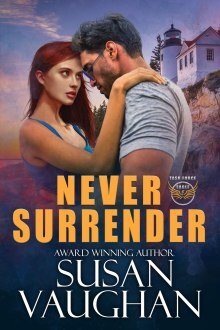
Maine offers more isolation on land, in huge swaths of forested land that’s largely unpopulated. All kinds of mischief and secrets can take place undetected. Headlines in the local news reinforce this notion every day. A man disappears while snowmobiling. His sled is found, wrecked, but there’s no sign of him. A young woman disappears never to be found, or her bones are spotted ten years later when a lumber company is cutting trees. Many Maine authors have taken advantage of this isolation to create moody and suspenseful stories.
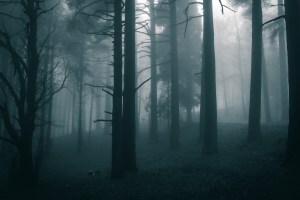
People in remote spots live a simpler way of life, independent, and in many ways disconnected from the modern world. Imagine an isolated lake cabin, where people are trapped together because the only way in or out is by boat, and someone has stolen the boat. Someone is stalking… Well, I’ll leave the rest to your imagination.

Then there are the wonderful old houses. And I don’t mean purposefully spooky like Stephen King’s turreted house with bats on the gate and a carved tree trunk. Old houses mean deep family roots with secrets and scandals—including hidden spaces or diaries secreted beneath floorboards or behind fireplaces. Small towns are where people have long memories and hold grudges. Old Colonial and Victorian houses make romantic and evocative settings.

If others have ideas of why people like to read and write about Maine, I’d love to see them.
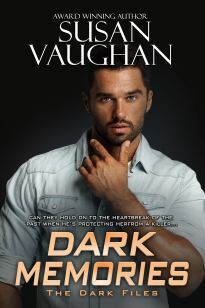 The Kindle version of DARK MEMORIES, the first book in my DARK Files series, is on sale now through the end of April for only 99 cents. DARK MEMORIES is one of those eight taking place in Maine. The story is set at an old resort somewhere near Camden. Here’s a short description: After museum curator Laura Rossiter witnesses a murder, she runs for her life, finally landing in a Maine resort where she feels safe. Until bad-boy Cole Stratton rides his Harley back into her life… Now a DARK officer, Cole has a mission: protect Laura, the golden girl he’s never forgotten, and flush out a killer. As the danger increases, so does the tension between the ex-lovers. You can find it here: http://getBook.at/DarkMemories
The Kindle version of DARK MEMORIES, the first book in my DARK Files series, is on sale now through the end of April for only 99 cents. DARK MEMORIES is one of those eight taking place in Maine. The story is set at an old resort somewhere near Camden. Here’s a short description: After museum curator Laura Rossiter witnesses a murder, she runs for her life, finally landing in a Maine resort where she feels safe. Until bad-boy Cole Stratton rides his Harley back into her life… Now a DARK officer, Cole has a mission: protect Laura, the golden girl he’s never forgotten, and flush out a killer. As the danger increases, so does the tension between the ex-lovers. You can find it here: http://getBook.at/DarkMemories
Backstory. And Why Your Novel Is Like Lasagna
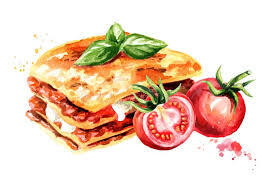
Have you ever eaten a bad lasagna? There’s too much Ricotta and very little ground beef, cooked bland and underseasoned. No garlic. Tomato sauce poured from a jar instead of San Marzano tomatoes simmered in spices. Dense sheets of pasta, dry and crunchy. I’ve made many bad lasagnas in my time in the kitchen, until I learned the secrets from the Italian nonnas. The key is in layering the ingredients in equal parts. The long-simmered gravy gets ladled onto the bottom of the pan. Then layers of noodles along with ricotta and handfuls of mozzarella cheese, followed by more sauce. Another layer of noodles. Ground beef or sausage comes next. More noodles Cheese. Keep layering. Then add lots of cheese over the top. Cook. Pour yourself a nice glass of red. Eat. Mangia!
Writing a novel is the same way. Notice here that I said novel. Not to say that backstories don’t matter in short stories, but they are not as necessary in that short form. In the novel, backstory is practically an essential component to communicating your ideas. The way you handle a character’s history often times determines the success of your novel.
The key is to think about your novel as a lasagna and your backstory as the cheese. If you leave out the cheese, then you really don’t have an authentic Italian lasagna (sorry vegans). A character’s backstory is the necessary glue that holds the novel together and gives it cohesion and authenticity. Without it, you will have not have the rich characterization that a novel needs to succeed. The sauce and beef will slide off the noodles and your lasagna will be a sloppy, unorganized mess.
But you need the precise amount to create this delicate balance. Novels with excessive backstory irritate me to no end and force me to put a book down in boredom. It’s not that I don’t enjoy a character’s past (I really do), or find it unnecessary to the story, but too much personal history in one section takes me out of the plot’s momentum—and that’s the worst thing that can happen to your story. It’s like being on a date and being forced to listen to the person’s entire dating history. There usually is no second date after such a fiasco.
Ask yourself if elements of your backstory are needed to further your plot. In most cases they are. Sometimes they act as unnecessary filler, in which case the offending scenes MUST be cut. But assuming that all your backstory is essential to the plot, this is where you need to start the intricate layering process. Save some of the backstory for other parts of the novel where your plot needs to breathe. Or else intersperse it throughout in order to delay suspense and titillate your reader. Like garlic in your lasagna, a little goes a long way.
Another mistake beginner writers often do is deliver their backstory in one big dump. It’s sort of putting unseasoned beef into the first layer of your lasagna. Doing this is a plot killer. Your backstory should, in some ways, have an arc just like your main story. The spice in the beef’s seasoning should be just as flavorful as the sum of its parts. I’ve read many amazing novels that jumped back and forth in time, and where I couldn’t wait to return to the various time sequences to see what would happen next. All your backstories and subplots should have their own individual arc that feeds into the rainbow that comprises your novel.
Your characters’ past matters greatly, so don’t ignore it. Or ignore it at the expense of your plot. History informs the reader about your characters’ motivations and values, and allows us to see them as fully developed, three dimensional human beings. This depth will add complexity and nuance to your story, just as oregano and bay leaves will take your gravy to a whole new level (gravy is the Italian nonna’s term for marinara sauce).
So when making that next lasagna, be sure to layer your ingredients in equal parts. Season your sauce and beef beforehand. Leave out the brown sugar and chocolate. And make sure to add a good amount of that fresh mozzarella and ricotta so that everything stays together. In that way, the whole will outshine the sum of its parts. If you do all that, I guarantee you that your guests will gobble up the entire tray.
Salud!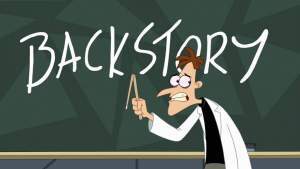
April 12, 2022
VICTIMS AND VILLAINS
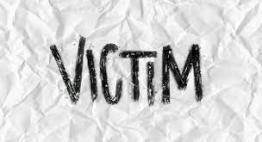
AND
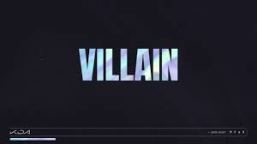
by Jule Selbo
Just days into the initial thinking on the third book in my Dee Rommel series (this one will be 8 DAYS), I’m focusing on fleshing out my characters and preparing a rough outline. And I find myself, again, faced with the question that always takes me time to ponder:
Who’s the murder victim?
An innocent?A semi-innocent who generates a small slip of the readers’ deep sympathies?A non-innocent transgressor? One who is a good part “bad” and/or “evil”? If I choose this, does this person become prey to someone with a deeper degree of depravity?An individual with no ethics, morality or kindness – one the reader may think has “gotten what they deserved” but, because of the justice system, it’s necessary that their death or maiming or whatever, is investigated and a culprit apprehended. If that is my victim, then do I flip it and have the perpetrator an innocent?Or? (Other possibilities.)The fact that I do get to select the background of the main (or first) victim is comforting, because, as we know, there is no right or wrong choice – just my choice (one that must fuel my imagination) – but possibilities – and other things – still go through my mind:
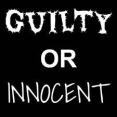
If a completely blameless person is traumatized, attacked or killed, does it engender more fear or anxiety in the sub-conscious (or consciousness) of the reader? Because it’s a reminder that no one is ever safe, that “wrong place, wrong time” is always a possibility? Will it/should it bring about worried flashes of “what if”? Could the reader identify in a visceral way by asking: “What if I’m walking down the street, on the way to buy an ice cream cone or maybe a cup of coffee, and something unexpected and untoward could happen to me, and I get dragged into danger?” (Perhaps the start of a woman-in-jeopardy thriller (or man-in-jeopardy)).
But is anyone totally blameless? If – as the layers of a life are peeled back, will a dark secret or bad karma moment always be revealed? A minor or semi-major mis-judgment or misdemeanor?
My natural guilty feelings aside (I went to Catholic school after all, and the nuns kept telling us we were all sinners, either on the surface or deep down in our young psyches, so how could I not have a rotten layer revealed in my life?) I wonder about the potential reader’s preference. Surely, it’s got to be a victim whose life is a layering of good and bad. Or bad and good. A complete “goodie-goodie” is not that interesting to read about – or write about.
I tell myself to stop worrying about the reader and find the victim that is fascinating to me.
And then, my mind wanders to: Who should be created first? The victim(s) or the perpetrator(s)? Or should they be created in bits and parts at the same time? Should they go hand in hand? (Would love to hear from others how/when these necessary ingredients are created. Does it change in every new book?)
Next question: Who will be my next “bad person”? The perpetrator who brings on the destruction of body and/or soul.
Questions come up in my conversations with self as I walk around my Eastern Prom neighborhood in Portland.

The website Novel Suspects has a few articles about the literary villains who don’t leave our minds. The un-credited writer strongly infers that the antagonist is the key ingredient in a crime-mystery. I’ve always believed that the antagonist should be as strong (perhaps even stronger through most of the story) than the protagonist to get that edge/anxiety/worry building in the reader. And that the protagonist is also a very key (most key) ingredient.
Novel Suspects also points out that if the reader identifies with the antagonist’s charisma, and their motives (even if their actions are questionable) it can raise the interest quotient.
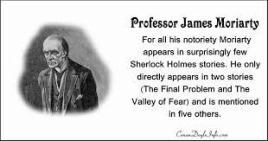
Everyone will think of Professor Moriarty, Sherlock Holmes’ arch-nemesis. Arthur Conan Doyle’s criminal mastermind used his great intelligence to get other people to commit crimes for him. (That is so cool.)
 Readers first met Moriarty in Doyle’s 1893 short story “The Adventure of the Final Problem” and then not again until 1914 in “The Valley of Fear” – and then in five other stories. We all love (or at least I do) the “who can outsmart the other” in the battles between Holmes and Moriarty.
Readers first met Moriarty in Doyle’s 1893 short story “The Adventure of the Final Problem” and then not again until 1914 in “The Valley of Fear” – and then in five other stories. We all love (or at least I do) the “who can outsmart the other” in the battles between Holmes and Moriarty.
In the “Artistic License Renewed, The Literary James Bond Magazine,” a 2020 article takes a look at Ian Fleming’s villains. The article points out that Fleming relished making his villains physically grotesque (football shaped heads, pincer hands, extremely short or tall or heavy or thin, having bad hygiene or massive scars etc.)
 Most wielded great power and had great wealth, many loved torture and sadism. (Does everyone believe that Fleming, a Brit private school grad from an uppercuts family and Naval Intelligence officer also liked a bit of sadism?) Fleming lauded his favorite writers (Chandler, Graham Greene, Maugham and others) for creating villains that terrified him with “real blackness” – and he wanted to emulate them.
Most wielded great power and had great wealth, many loved torture and sadism. (Does everyone believe that Fleming, a Brit private school grad from an uppercuts family and Naval Intelligence officer also liked a bit of sadism?) Fleming lauded his favorite writers (Chandler, Graham Greene, Maugham and others) for creating villains that terrified him with “real blackness” – and he wanted to emulate them.
Many of Agatha Christie’s books focus on crimes committed because of greed or love, a few deal with vengeance. (Pix of her is from about 1925, she was well into her career by then.)
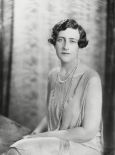
She mostly created unlikeable, unpleasant or immoral victims (did she prefer to have the victim “deserve” their demise?) as well as unethical, narcissistic, twisted or manipulative villains who go to great lengths to construct their murders and nefarious crimes.
Hieronymus Bosch (created by, as we all know, Michael Connelly, former journalist on the crime beat) often ends up facing big-city villains planning on feeding their greed or settling scores of real or imagined transgressions – and most fall into the purview of Bosch’s work as a detective. Crime mystery writer, Peter Moreira, in his self-named blog, states his opinion that the best Connelly/Bosch villains are: Jason Jessop (The Reversal, 2010) and Robert Backus Jr..

I’ve read (and enjoyed) all the Bosch books, but don’t have the kind of memory that keeps all plots right at hand. So, I looked up Jessop and Backus (yes, the Harry Bosch Wiki has their character bios). Jessop is a sadistic tow-truck driver who abducted a twelve-year-old girl (Melissa) and eventually killed her. He was apprehended, charged and convicted. Twenty-four years later (when Bosch comes into the picture), Jessop has taken advantage of new DNA techniques and gets his conviction overturned. While a shady lawyer manipulates the media, Bosch and Defense Attorney Haller have to gain new evidence to prove evil Jessop’s guilt – before he can take them down.

Robert Backus Jr., a ruthless, creative killer, appeared in The Poet (1996) and The Narrows (2004); In The Poet, Backus had a highly respected FBI career, he was a special agent in charge of the Behavorial Section of the FBI. His true character reveals itself when his life as a serial killer is exposed. Crime reporter Jack McEvoy (and FBI Special Agent Rachel Walling) are Connelly’s protagonists in The Poet and end the story thinking Backus is dead. In The Narrows, Bosch (and Rachel Walling) realized Backus’ death was a fake when one of the cops who helped take him down (in The Poet ) is murdered. The psychopath is back and Bosch and Walling has to face great evil.
SheReads.com lists great villains in the women-in-jeopardy arena (most are domestic – husbands, boyfriends, some are bosses). In the psychological suspense area, it’s also (mostly) familiar entities to the victim who are identified as the perpetrators.

Donna Tartt (I’m still fascinated that she’s only five feet tall and is pretty reclusive) – her 1992 book Henry, The Secret History is praised for its charismatic, charming villain: a “…fascinating antagonist that separates himself from his fellow classics scholars by being careless for human life in a way rarely seen in crime novels. He doesn’t care because he can’t be bothered to care… he’s bad, true, but a joy to watch in action.”
Among other great villains: Thomas Harris’ Hannibal Lector in the 1988 novel The Silence of the Lambs, 1999’s Hannibal, and the 2006 prequel to the series Hannibal Rising and he also appears in Red Dragon (1991).

Lecter is known for his refined tastes, his sense of humor, his good manners and his penchant for cannibalism. He chooses what victims to eat: people he doesn’t respect, people he thinks are rude, people who have done wrong to others. He’s intelligent, loves music, art, and creating complex dishes from the flesh of his victims. Mads Mikkelson (who played Hannibal in the tv series and one of my favorite Danish actors) in a Variety interview, talked about why he liked to play villains who have a strong point of view of the world, one the reader can almost get behind. He also talked about why he thinks audiences love to try to get into the head of the villain: “We hate them in reality, we don’t want to see them, but there is a fascination. I’ve said (before) that five minutes after we invented God, we invented Satan. Man is driven by both sides, we’re very curious what’s on the dark side, maybe because it’s part of us and we really want to try and understand what it is.”
He also talked about why he thinks audiences love to try to get into the head of the villain: “We hate them in reality, we don’t want to see them, but there is a fascination. I’ve said (before) that five minutes after we invented God, we invented Satan. Man is driven by both sides, we’re very curious what’s on the dark side, maybe because it’s part of us and we really want to try and understand what it is.”
There are a multitude of great villains and victims in the crime-mystery genre – and my next few days are going to be spent in deciding who will populate 8 DAYS. I’m thinking to nod towards Fleming’s love of grotesqueness, Harris’ twisted but relatable motives, Tartt’s ploy of finding the real evil in a herd of “pretty evil”. But maybe not.
I’m always looking for new books with great victims and villains to read and savor. Would love to hear your favorites.
April 11, 2022
Cover Chameleon
If you have been in a bookstore lately (and I confess, I have not…I seem to be hellbent on enriching Jeff Bezos, possibly even sending him off to space again), you will have noticed a relatively new trend in book covers. Some, especially cozy mysteries and romances, have been cartoonized (Yes, I know. Not a word.). Nearly every recently-released book has a colorful, almost child-like cover. Shelf after shelf look candified (also not a word).
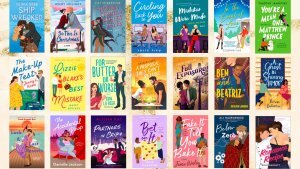
My own Lady Adelaide mystery series is an example of such cuteness. After the first book (whose cover I love) came out, the publisher was purchased by another company. They did not like Book #1’s look, changed the fonts for Book #2 and threw Lady Adelaide into a roadster at night in sunglasses. I thought she looked dashing if a bit misguided, and didn’t mind much. I’m now humming “I wear my sunglasses at night…”

Then came Book #3. The first cover choice was pretty awful, with a smarmy, Fedora-ed, mustachioed man who bore no resemblance to my detective hero. My first thought: Snidely Whiplash has moved from 19th c. railroad tracks to a 20th c. nightclub. My editor and I both objected. We convinced the powers-that-be to get rid of the guy and let Addie drink tea alone instead of a bottle of hooch. That the tag to the teabag is dangling from her cup I tried to ignore. No proper Englishwoman—and she is every bit that—would permit such sacrilege. But if you look reeeally closely, there is a tiny skull and crossbones on the tag, which is a clever touch.
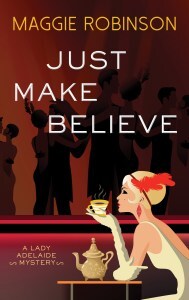
Book #4 is perfectly fine, even though there are autumn leaves everywhere and the story takes place in June. The characters appear to be wearing clothes with a 1930s silhouette instead of the 1920s, but perhaps some time travel was involved to get a glimpse into their future.
You can tell I’m a little picky, and probably most readers wouldn’t notice or care. Except…people who read historical-set books are usually very well-versed in what is appropriate for the relevant time period.
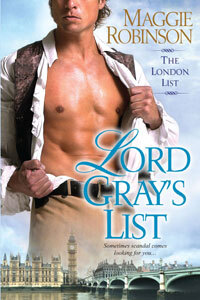
In my previous authorial life, I wrote romances. Some years back, I gasped in dismay when I saw the cover for Lord Gray’s List. It wasn’t because I’m prudish and don’t appreciate an anachronistic waxed and oiled chest. I’m only human. But here is Lord Benton Gray in 1820, posing half-naked in a button-down shirt that had not been designed yet, along with the Houses of Parliament.
Interestingly, the foundation stone for that building wasn’t laid until 1840, and the entire Palace of Westminster was finally completed around 1870. Lord Gray was a man ahead of his time, wasn’t he? I am just grateful that the art department didn’t throw the Gherkin and the London Eye into the skyline. And we won’t examine too closely where Big Ben has been placed relative to hero Ben. There is a certain lack of…subtlety.
For a while, there was a “headless” trend on covers, which suited me. I like backs-only too. I prefer to imagine the protagonists myself, and find it difficult when the faces on the front don’t match the vision in my mind. Blood spatters seem popular now—a grim sign of things to come, no doubt.
Do you pay attention to covers? What catches your eye? Does a “bad” cover ever turn you off from buying the book? I absolutely adore the look of the latest Lord Peter Wimsey editions. Very stylish!
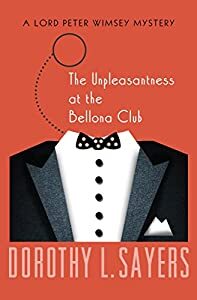
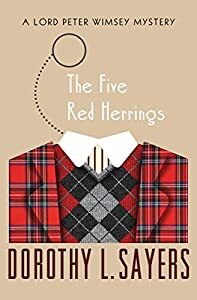
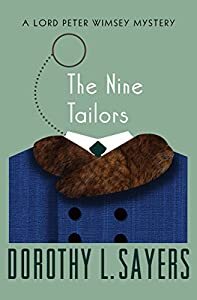
More information about me and my books can be found at maggierobinson.net. If you’d like a Lady Adelaide series bookmark or two, please email me: maggie@maggierobinson.net
April 8, 2022
Weekend Update: April 9-10, 2022
 Next week at Maine Crime Writers there will be a posts by Maggie Robinson (Monday) Jule Selbo (Tuesday), Joe Souza (Thursday) and Susan Vaugan (Friday).
Next week at Maine Crime Writers there will be a posts by Maggie Robinson (Monday) Jule Selbo (Tuesday), Joe Souza (Thursday) and Susan Vaugan (Friday).
In the news department, here’s what’s happening with some of us who blog regularly at Maine Crime Writers:
 Susan Vaughan: Dark Memories is on sale on Kindle for only 99c. Here’s a short description of the book. After witnessing a murder, Laura hides under an alias at a Maine lake resort where she feels safe. Until bad-boy Cole walks back into her life. Now a Fed, he has come to protect her and flush out a killer. As dark memories assail them and a killer closes in, they must learn to trust each other—before their future is extinguished forever. Romance Junkies called it “spellbinding,” and Cataromance said, “mesmerizing plot, captivating characters.”
Susan Vaughan: Dark Memories is on sale on Kindle for only 99c. Here’s a short description of the book. After witnessing a murder, Laura hides under an alias at a Maine lake resort where she feels safe. Until bad-boy Cole walks back into her life. Now a Fed, he has come to protect her and flush out a killer. As dark memories assail them and a killer closes in, they must learn to trust each other—before their future is extinguished forever. Romance Junkies called it “spellbinding,” and Cataromance said, “mesmerizing plot, captivating characters.”
http://getBook.at/DarkMemories
An invitation to readers of this blog: Do you have news relating to Maine, Crime, or Writing? We’d love to hear from you. Just comment below to share.
And a reminder: If your library, school, or organization is looking for a speaker, we are often available to talk about the writing process, research, where we get our ideas, and other mysteries of the business. We also do programs on Zoom. Contact Kate Flora
April 7, 2022
Help! I’m Wrestling with a Conundrum!
I’m grappling with a conundrum about point of view.
 Part of me loves writing in first person. Writing from the “I/we” perspective allows the main character’s personality to beam through. First person makes for an intimate bond between the reader and the protagonist, whose quirks feel more real, her fears more intense.
Part of me loves writing in first person. Writing from the “I/we” perspective allows the main character’s personality to beam through. First person makes for an intimate bond between the reader and the protagonist, whose quirks feel more real, her fears more intense.
But as every one of my colleagues here on MCW knows, there’s a trade-off for that immediacy—every fact and perception is funneled to the reader through the mind of the protagonist.
Writing in third person allows writers the flexibility to present the story from multiple perspectives, and this can be a boon. There’s inherent conflict when some characters know things other characters don’t (and maybe need) to know, and in crime fiction, conflict is more than desirable, it’s essential.
The general rule is that authors must choose.
I am not always good at obeying rules.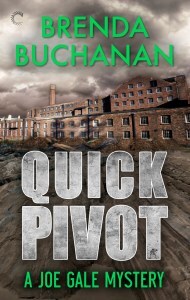
In my Joe Gale series, I played around with point of view. Quick Pivot, the first book in the series, alternated chapters between the point of view of newspaper reporter Joe, written in first person, and his mentor, Paulie Finnegan, written in third person. To amp the degree of difficulty, I used dual timelines. The Joe chapters were contemporary, the Paulie chapters were set in 1968. That book was a blast to write. Tricky, yes, but lots of fun.
Cover Story, was written entirely from Joe’s point of view, and with that particular tale, it worked. No scenes demanded to be written from another character’s point of view. Though it is the second book in the series, Cover Story was the first book I actually wrote, and its wholly-first-person point of view almost certainly stemmed from the fact it was my first effort to get 90,000 words on paper. Learning to write a novel was hard enough without doing anything fancy.
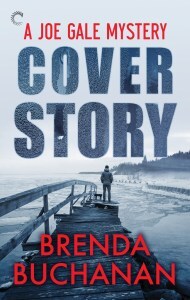
In Truth Beat, the third book in the Joe Gale series, I also used a first person/third person combination. Joe narrated most chapters, but some were from the perspective of his buddy Rufe, who knew some key secrets the reader needed to know along the way.
My current novel in progress features Neva Pierce, a Portland criminal defense lawyer who takes on the kind of cases that prove Maine’s not always Vacationland. It has five point of view characters, all of whom are essential to the story. Each chapter is confined to a particular character’s point of view—I don’t hop heads in the middle of chapters. The conundrum I mentioned at the outset is whether Neva can be written in first person, and the other four characters in third person, or whether all five should be in third person.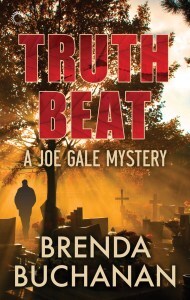
While I’m not a fan of hard-and-fast writing rules, I don’t want to frustrate, irritate or exasperate my readers, so I need your help. I will greatly appreciate hearing from those of you who read this blog, writers and readers alike. Here are my questions:
First, does a novel work for you if different chapters are written from the point of view of different characters?
Second, is it a problem if one of those characters is a first-person narrator, and the others are written in third person?
I very much will appreciate your thoughts and opinions.
P.S. Neva is the first-person narrator of my short story Means, Motive, and Opportunity, which was included in last year’s anthology, Bloodroot: Best New England Crime Stories 2021. Joe Gale fans should note he plays a central role in that story as well.
Lea Wait's Blog
- Lea Wait's profile
- 509 followers



